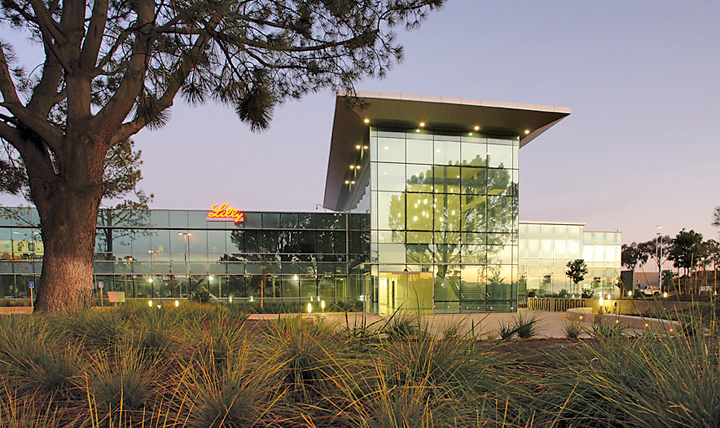“Now is the time in our sector to start to think about how we find the next rich seam of discovery,” GlaxoSmithKline CEO Andrew Witty told a throng of professionals at last summer’s International Association of Science Park annual conference in Raleigh, N.C. “How can we accelerate the potential integration of all of these technologies, and break down the walls to our own research facilities?” he asked, so that small biotech firms could start up within GSK, or co-located right next to GSK facilities.
Given the rate at which GSK is shrinking its R&D activity, there may be ample room inside those walls after all. Early February brought the news that the company would expand cost-cutting in an effort to save an additional US$800 million a year by 2012. Cuts are expected in R&D, and some projections put total job cuts at 4,000, or 4 percent of the company’s 100,000 employees. Along with the job cuts will come a 13-percent reduction in its real estate occupancy, eliminating 11 million sq. ft. (1,021,900 sq. m.) of office space from its portfolio.
Glaxo has company, as nearly every other major pharmaceutical firm takes similar steps. Pfizer wants to cut R&D by $3 billion following its takeover of Wyeth. Following its own merger with Schering Plough, Merck plans to cut 14,000 jobs, while AstraZeneca wants to cut 8,000 by 2014.
One indicator of the general state of flux: McKinsey & Co. in February sent out a batch of its collective wisdom on pharma R&D reinvention, a form of consulting triage. All of which means that major pharmaceutical firms’ real estate and facilities managers, already a pretty close-to-the-vest bunch, have neither the time nor the inclination to speak on the record about what they’re up to.
That said, some measure of project activity is on the record in the Conway Data New Plant Database. From July 2008 through November 2009, Site Selection tracked nearly 250 biotech and pharmaceutical facility projects from the private sector, with approximately half of them in the United States. Internationally, leaders in project counts, in order, were China, India, United Kingdom, Canada, Hungary, Ireland and Mexico. Budapest alone boasts six projects over that.
U.S. leaders in luring biopharma projects include Pennsylvania (11), California (10, with half in San Diego), New York (9), Ohio (8), and Illinois, New Jersey and North Carolina (7 each). Leading metro areas in those states are the New York CBSA (8), Philadelphia (7), Chicago and the Research Triangle combined metros of Durham and Raleigh-Cary (6), and longtime life sciences strongholds Boston and San Diego with five apiece. In Massachusetts, according to MassBio, the life sciences sector experienced a 42.6-percent increase in jobs from 2001 to 2009.
Standouts Amid Whitewater
Among the firms not standing pat is Eli Lilly & Co. Even as it completed in January the sale of its Tippecanoe manufacturing facility in Lafayette, Ind., to Evonik Industries, it could also celebrate several recent facility locations and expansions. They include:
- A $453-million two-phase investment in a new insulin manufacturing and headquarters complex in Florence, Italy;
- Subsidiary ImClone’s July 2009 R&D headquarters location in more than 90,000 sq. ft. (8,361 sq. m.) of the Alexandria Center for Science and Technology at the East River Science Park in New York City, delivering 125 initial scientist positions via an initial 15-year lease;
- The 2008 completion of its new biotech R&D complex at its headquarters in Indianapolis;
- The October 2009 grand opening of Lilly Biotechnology Center-San Diego, which employs more than 200 scientists in a location near the University of California-San Diego and other prominent biomedical research institutes. Lilly is leasing approximately a quarter of a 450,000-sq.-ft. (41,805-sq.-m.) facility known as Campus Pointe, owned and managed by Veralliance Properties of San Diego, which partnered with Prudential Real Estate Investors on the development.
“We are moving full speed ahead toward building a biotechnology powerhouse,” said John Lechleiter, Ph.D., Lilly chairman and CEO. “The science, technology and talent at our new center in San Diego will help bring novel biotech medicines to patients faster and more efficiently, and reinforces Lilly’s commitment and contributions to San Diego’s burgeoning bioscience industry.”
One day after the opening, Lechleiter had some more pointed remarks, as he called for repairs to the “engine of biopharma innovation” that he feels is broken in the U.S., in part because of a risk-averse policy and regulatory environment and the demonization of the pharmaceuticals industry by elected officials looking to score points in the healthcare reform debate. He said collaboration and competency in the biopharma community was the best way to show those policy makers the true value of its innovations.
His comments echoed those of David Brennan, CEO of AstraZeneca, who in April 2009, at his installation as board chairman of the Pharmaceutical Research and Manufacturers of America, spoke of Asia and Europe’s aggressiveness in instituting pro-medical innovation policies. “Quite frankly,” he concluded, “without a pipeline full of innovative medicines, it will be difficult, if not impossible to create meaningful and sustainable healthcare reform.”
